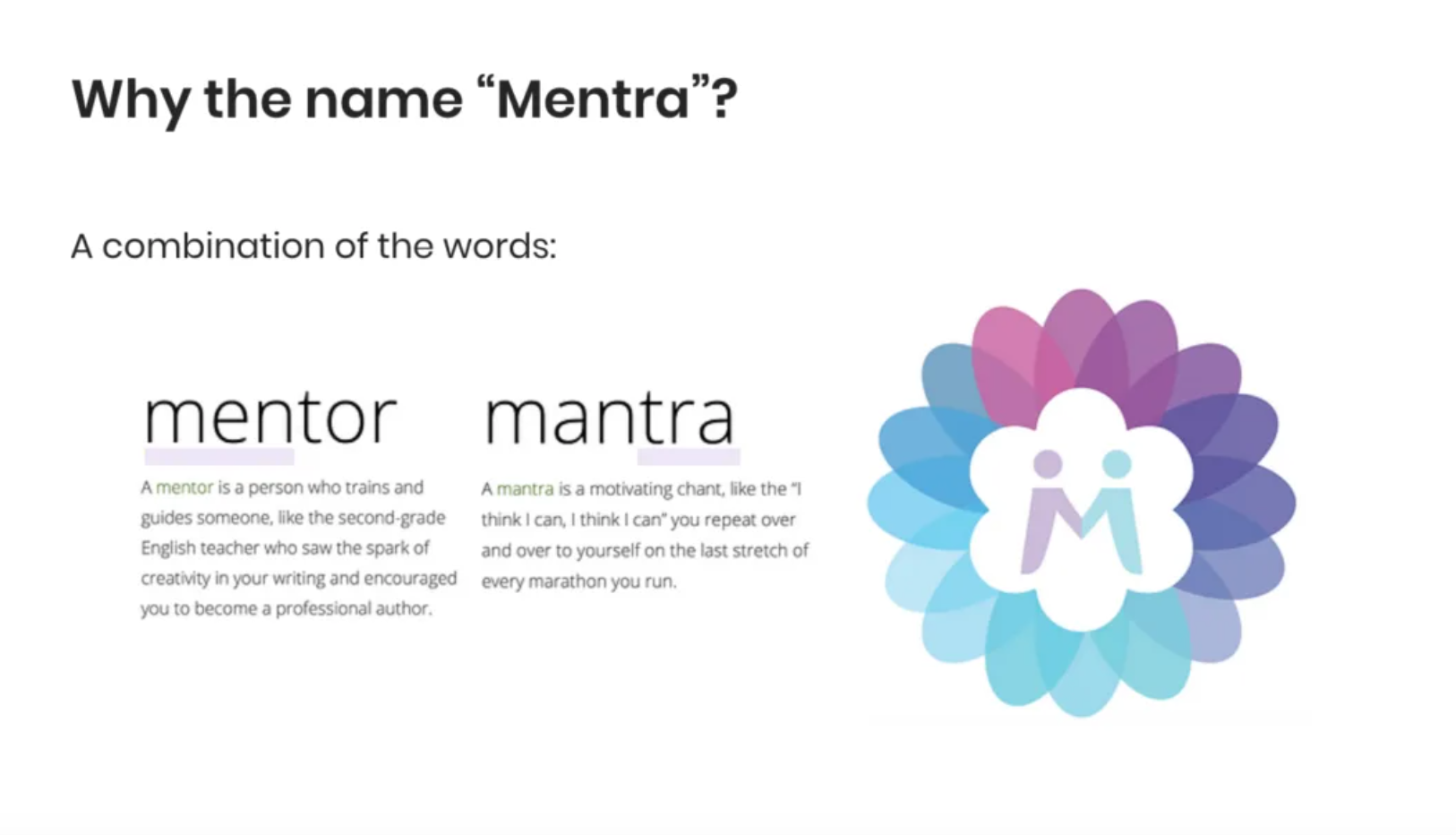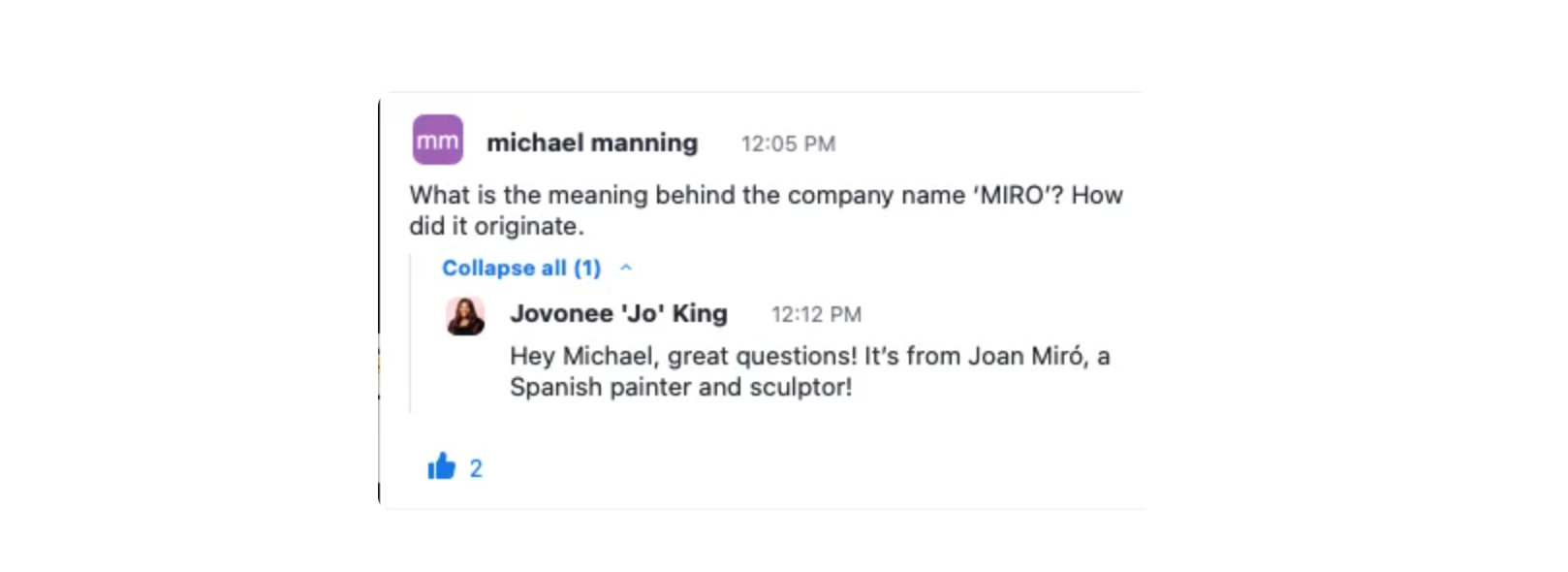How to name a product: From brainstorm to buzzworthy
Naming a new product isn’t easy, but it doesn’t have to be painful. Sure, the pressure is real. It can be tempting to slap an acronym on it and call it a day. But taking time to come up with the perfect name is truly worth the effort. Choosing a new product name often feels deeply personal for entrepreneurs, business owners, and product leaders.
Rightfully so, because a bad product name or brand name can keep a product from being memorable and gaining brand recognition. A tongue-twister name isn’t as likely to be one you’ll pass on to your friends as something easy and fun to say. A great product name will help your fans pass on their recommendations to new potential customers via word of mouth (or text of hand, as it were).
Try this—say these product names out loud and consider how they make you feel: Slack, Apple, iPhone, Twitch, Twitter, Adobe, Amazon, Miro, Google.
These brand names are not only easy to say, they’re fun!
The Product Naming Process: Let's Get Started!
While naming your new product or coming up with a new name for a product that’s evolving can be a daunting task, there's also something pretty exciting about the product naming process.
As a product leader, you may be tempted to outsource the effort or designate it to an individual, but I’d argue that having a founder entrepreneur or lone creative genius go off and do it alone is less likely to lead to a unique name that will be a perfect fit and withstand the test of time.
Instead, a great product name should be drafted by bringing together critical team members to collaborate in the naming process. But don’t think of this as any other brainstorming exercise. Naming strategy requires brainstorming, for sure, but landing the best name for your company that resonates with your target market will take more than just coming up with ideas. During the naming process, you’ll want to evaluate any potential new name idea to be sure it conveys the right brand image, creates the right emotional connection and, of course, is memorable.
So, what are my tips when it comes to picking a great product name, and how can you get started on the naming process with your team?
5 Methods for Brainstorming a Product Name
1. Be informed
Use market research to your advantage. What do you know about your potential customers? What other brands and types of names are they interacting with frequently? I am a fan of mining sentiment from the target audience via social media and review sites to see what words they use to describe the product or the products and services similar to our own. This can be a great input for name ideas. Even just starting with a few real words used by your target market and playing with those can be a great start.
2. Quantity over quality (at first)
When coming up with ideas, don’t focus on landing the right name or a perfect product name immediately. Write anything and everything down. Try new words that you’ve never considered. Build on one another’s name ideas. Use tools such as a thesaurus or word association generator to get you moving, and use idea management software to keep your name ideas organized. Hold off on judging any ideas during this phase or calling out any ideas as “bad.” I’ve seen some of the best name ideas turn up due to a different name idea that was shared freely in a brainstorming session.
3. Make it up!
Just because it should be simple, novel, pronounceable, and versatile doesn’t mean it can’t be a made-up word. A favorite recent example for a new product name is the name “Mentra.” This is the brand name given to the Sam Altman-backed startup built to help neurodivergent job seekers find their perfect job match. The name combines two words: Mentor + Mantra = “Mentra.” The Mentra website explains why their team chose its name:
I love how the story and reason behind this name support the brand strategy they have defined and the company's overall mission. Not only is it memorable, it’s meaningful.
4. Consider the stories that inspire you
I was on a recent product demo for Miro when someone asked how Miro got their name. The answer: “From Joan Miró, a Spanish painter and sculptor!” While I wasn’t there for the brainstorm, I imagine that someone on the team was inspired or influenced by Joan Miró and his name made it into the mix.
5. Play with vowels
Think about the emotion you want to convey and the language your target audience will use. Do a bit of research on what sounds might convey that feeling. For example, certain vowel sounds may evoke different feelings:
The quickness and efficiency in a short “i”: FitBit
The calm and exclusivity in a long “u”: Hulu, Buick
The casual simplicity of a short “a”: MacBook
How to Narrow Down Your Product Name Ideas
Now that you’ve got a plethora of new names to consider, take a look at the list that you’re evaluating. Consider whether each name is simple, novel, pronounceable, and versatile. If other must-have attributes for your new name have been defined, review potential brand names against those.
Simplicity
Short is better than long. Simple is better than complex. Stick with names that are clear and easy to remember. Avoid convoluted language or meaning that needs to be explained. Rather than a multi-word brand name, aim for a single word. Ask yourself: “Could a single word from this set stand alone and be stronger than multiple words strung together?”
Novelty
When I say novelty, I mean the good kind. Aim for a unique and different name that stands out and sticks in the mind as much as it easily rolls off the tongue. Does the name you’ve come up with stand out as unique in and of itself? How about against the competitors you care most about? For example, if competitors have more literal descriptive names, you might go with something more unexpected, playful, or even a made-up word.
Pronounceability
Don’t make people work hard to say your name. Also, consider whether your name needs to work in multiple languages and cultures. We live in an ever-more globalized world, so I recommend thinking about how the name you’ve chosen may support brand recognition in other cultures sooner rather than later. The name Adobe is an example of a company name that works well because it’s easy to pronounce and understand across languages and cultures.
Versatility
Products and services are ever-evolving. A name that doesn’t lock you into a particular offering can better serve you in the long haul. Even if you think you know who you’ll grow up to be, you might become something else. The name Google isn’t limited to search (although we all think search when we hear 'Google'), the company name has allowed them to expand waaay beyond just search. And the name still works! We now associate the word with maps, email, and hardware—among others.
Beyond The Brainstorm: A Few Brand Strategy Tips
Keep your options open
Narrowing in and choosing a few options can feel like a huge accomplishment (and it is!), but be sure to keep a few options in the running until you go through the process of trademarking and buying your domain name. Once you’ve gone through the process of securing the company name, you can move to the next step and tell the world (your target audience) all about it!
Don’t go it alone
You brought a team of people together to tackle the product naming process. You mixed one part brainstorming with one part evaluation to get to the best name for your company. To make sure that the brand name makes it out in the world, keep team members close and document the inputs you used for your brainstorming session, plus anything that might be useful as the company develops the brand further. The team's ideas and decisions can inform social media and marketing strategy, brand identity development, and the naming conventions for subsequent products or features within your newly-named product.
More Resources for Product Naming
Explore Merriam Webster Thesaurus & Dictionary
Use a word association generator
Talk to Chat GPT or another AI tool
I’ve got my own approach to helping teams come up with product names. You can read more about it here.
This article originally appeared in an online publication called The Product Manager. All words are my own.


